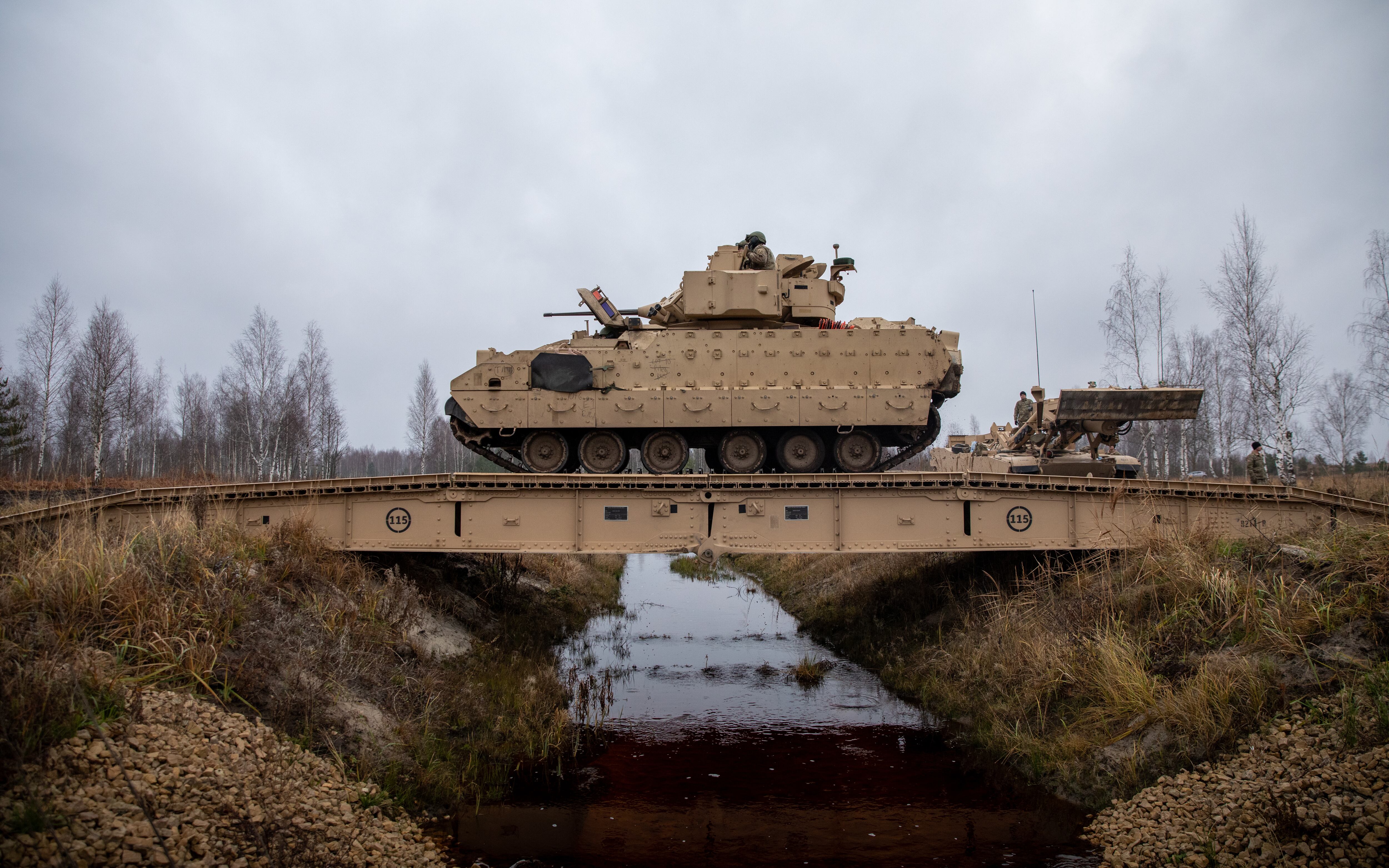WASHINGTON — The U.S. Army will ask industry for prototype designs for its Bradley Infantry Fighting Vehicle replacement in June when it releases a final request for proposals, according to service officials in charge of the effort.
Much of what the Army is seeking in the upcoming detailed design phase for the optionally manned fighting vehicle, or OMFV, was not made public on the U.S. government’s contracting website sam.gov, with documents marked as “controlled unclassified information” in previous draft RFPs.
These “controlled unclassified information” documents contain performance specifications that will define the vehicle, Brig. Gen. Glenn Dean, the Army’s program executive officer for ground combat vehicles, told Defense News in an interview. The specifications, he explained, include the Army’s integrated architecture — dubbed Modular Open Systems Approach — which will underpin designs.
Industry and the Army have worked on the open architecture while five teams participated in the current phase of competition to come up with design approaches rather than actual designs. The five teams selected to compete for the OMFV program were Point Blank Enterprises, Oshkosh Defense, BAE Systems, General Dynamics Land Systems and American Rheinmetall Vehicles.
Two years ago, the Army, in its first attempt to hold a competition to replace the Bradley, received just one physical bid sample — from GDLS — by an October 2019 deadline. Instead of moving forward, the Army canceled the competition and produced a new plan meant to generate robust competition and give industry a chance to tell the service what is possible. That plan laid out a five-phase effort.
The first phase, now in full swing, is for an initial design. Next is a full and open competition for a detailed design phase, executed over fiscal 2023 and fiscal 2024. Awards for up to three contractors are expected in the second quarter of FY23.
The prototyping phase will begin in FY25, and the Army is expected to select in the fourth quarter of FY27 one company to build low-rate production vehicles. Full-rate production is expected to begin in FY30.
The RFP, when complete, should give industry “a good idea of what scope to bid to, how to begin to further adjust requirements and then where do we need to focus on the next iteration,” Dean said.
“What’s really different about the RFP is the way the scope is written,” he added. “We’re heavily focused on this use of model-based systems engineering, digital engineering. So it’s built a little more flexibly than our traditional development programs would be.”
The digital engineering used in the program has “never been done before in ground combat vehicles,” Maj. Gen. Ross Coffman, who is in charge of combat vehicle modernization, said in the same interview.
“You don’t set a requirement upfront until you have to, [that’s] never been done,” he added. “The modular, open-system architecture [we] have come up with, [it’s never been done. … We’ve had standards in the past … but this is revolutionary and transformational, and the effect it will have long term as we upgrade vehicles in the future — it’s going to save taxpayers a ton of money.”
Some requirements must be set upfront because of the nature of the system. For example, every offering must be a vehicle, Coffman explained. But for some specs, the Army let industry “fill in the blank,” Coffman added. “You tell us what your design is capable of.”
As the Army works with industry, it will likely release one more draft RFP ahead of the RFP’s release in June, Coffman noted. “We are iterating as fast as possible on this so that we can inform the final requirements and get a decision from the chief of staff of the Army and the secretary on the requirements and on the schedule.”
On the materiel development side, Dean said the Army may have a good sense of what individual requirements are feasible right now; but as designers consider ways to combine the service’s needs, the question is: “Do they remain feasible?”
The Army will simultaneously release the RFPs for the detailed design phase and for the prototyping phase.
“That’s principally a schedule concern,” Dean said. If we were to pause in between and compete, you’re going to lose some time. You can do some of that work in parallel.”
The strategy to move out with the prototyping phase RFP helps avoid that pause, but also helps contractors with long-lead items. For instance, if a contractor decided early in design that it was going with a specific engine, the approach would allow the team time to order engines for prototypes while still completing the detailed design, shoring up some time at the end.
“There’s some advantages to having that separation, but given the current schedule, it’s better to put those two activities together when it’s kind of natural,” Dean said.
Jen Judson is an award-winning journalist covering land warfare for Defense News. She has also worked for Politico and Inside Defense. She holds a Master of Science degree in journalism from Boston University and a Bachelor of Arts degree from Kenyon College.





